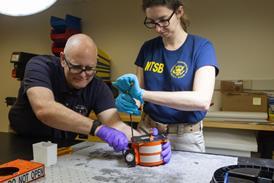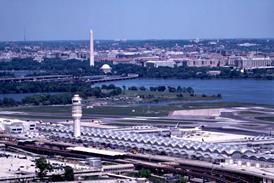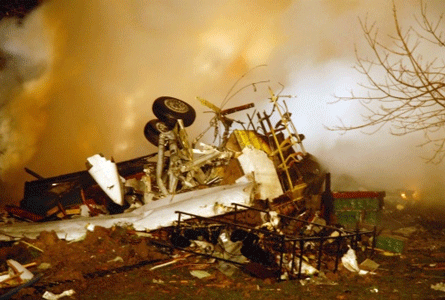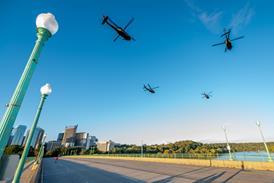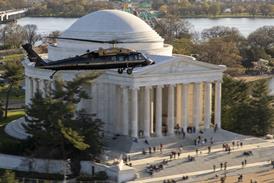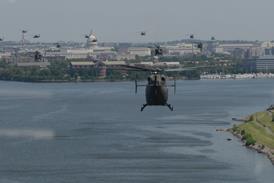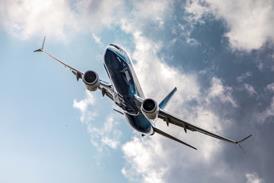
Graham Warwick/WASHINGTON DC
When Bell introduced the Model 407 light single-turbine helicopter it was essentially competing with itself, or rather with the longevity of its popular Model 206 JetRanger/LongRanger family. With the new Model 427 light twin, the company is breaking new ground, and competing with helicopters from established manufacturers.
The Bell 407 has become "the success story of the industry", says a grudgingly admiring competitor. The company has shipped more than 225 aircraft since deliveries began two years ago, and produced no fewer than 140 in 1997. The secret of the 407's success is its price; the helicopter offers substantially more performance than that of the 206L-4 on which it is based, but is only marginally more expensive to buy and operate.
Using design-to-cost tools honed on the 407, Bell has set an even more aggressive target for the 427. The helicopter sells for just under $2 million, which is almost $500,000 cheaper than Eurocopter's EC135 light twin - and more than $1.4 million cheaper than Boeing's MD902 Explorer, even with a $500,000 price cut introduced soon after the launch of the 427.
Although both the EC135 and MD902 offer higher performance, they do so at higher prices, and Bell's stated aim with the 427 was "-to provide performance and useful load comparable to that of the competitors, but at a price clearly lower than other products in the same class". With more than 70 deposits already in hand a year before deliveries begin, Bell believes that it has hit its mark.
COST TARGET KEY
The company expects to meet its design-to-cost target. "It looks good," says product manager Bob Barr. The key, he says, was setting a cost target at the start of the programme of which everybody involved, including vendors, was aware. "It's a team effort," he stresses.
When Bell launched the 407, it talked of developing a stretched, twin-engined, version later, but this was dropped in favour of an all-new design sharing only its rotor system with the 407. The problem, Bell says, is that it is difficult to produce a good twin from a good single.
The company has had two previous attempts at entering the light-twin market. Development of the Model 440 light twin began in Canada in the early 1980s, but was halted when the helicopter market collapsed. In the early 1990s, Tridair Helicopters developed a twin-turbine conversion for the 206L. Bell built a handful of 206LTs using the Tridair conversion, but the TwinRanger was not a commercial success.
The difference between the power required to hover and the power required to cruise represents a difficult challenge for the designer of a twin-engined helicopter, Bell says. Installing sufficient power for good single-engine performance adversely affects cruise performance because of the poor part-power fuel economy of turbine engines. Bell has had to work hard to maximise useful load while minimising price.
The 427 is the first Bell helicopter to be designed entirely on computer, using Dassault's CATIA three-dimensional solid modelling system and an electronic mock-up. This increased the number of engineering hours required during design, but has led to savings in manufacturing and assembly. The first cabin structure was assembled using only one minor shim. "It's unbelievable," says Barr. The cabin came out of the assembly fixture ahead of schedule, enabling first flight to be brought forward by a month.
Bell opted for a largely composite airframe to reduce cost and weight compared with stretching the 407's mainly metal airframe. The cabin floor and roof are flat panels; cabin contours are restricted to the sidebody panels, which extend from the forward cockpit-door frame aft to the tailboom attachment point. This contrasts with the 206 series, which has floor and roof bathtub structures requiring complex tooling.
The large, one-piece, carbonfibre-composite sidebody panels provide structural stiffness and reduce parts count. The 427 fuselage has 55% fewer parts than that of the 407,Bell says. Laminate cutting is computer controlled and laser projection is used to position the laminates during layup. The first sidebody produced was usable in a flightworthy aircraft, Bell says. The electronic mock-up helped to ensure first-part accuracy, the company says, and the fuselage for the first 427 prototype was assembled in about half the time required for the 407.
Metal is used "-where it works best". Roof beams and nose-section keel beams are produced using high-speed machining. Net cost is less than for a fabricated part and the machined part needs no additional processing other than primer coating, Bell says. The tailboom is a rolled-aluminium cone, as in previous Bell light helicopters, but a lighter composite structure is planned as a later product improvement.
Although the 407 is powered by the Allison 250, which also powers Bell's 206 family and its 230 and 430 intermediate twins, the company selected Pratt & Whitney Canada's PW206 for the 427. The same engine powers the competing Agusta A109 Power, Boeing MD902 and Eurocopter EC135 light twins. The PW206Ds used in the 427 are rated at 477kW(640shp) for take-off, with a 30s one-engine-inoperative rating of 574kW. The maximum transmission rating is 596kW. The main transmission is all new, and a departure from Bell's design tradition. The "flat-pack" transmission has only four gear meshes, Barr says. Each engine input-shaft drives through an integral free-wheeling unit to a spiral-bevel mesh. A shaft on this gear drives through a helical mesh to turn a large collector gear, which drives the main-rotor shaft. The transmission is mounted to the airframe via four liquid-inertia vibration eliminators, used in other Bell helicopters.
The four-blade main rotor is based on the 407's and derived from that developed for Bell's OH-58D Kiowa Warrior. The composite "soft-in-plane" hub is hingeless: the blades are attached to a flexible glassfibre-reinforced plastic (GFRP) yoke via elastomeric bearings. The blades are also composite, with a GFRP skin wrapped around a GFRP spar and Nomex-honeycomb core. The 427 blades are 40mm longer and 25mm wider than the 407's, but are produced in the same bond fixtures, Bell says.
After its price, perhaps the best selling point of the 427 is its cabin, which is big for a light twin, Barr says. Crashworthiness requirements, which were not applicable to the 407 because it was certificated as a derivative of the 206, required the fuel tanks to be moved out of the cabin. They are located between the cockpit and the cabin and behind the cabin. Crash-attenuating seats are provided for six passengers, in a standard club arrangement or an optional airline-style layout of all forward-facing seats - made possible by the 427's longer cabin.

LOOKING AHEAD TO IFR
At under $2 million, the Bell 427 is a visual-flight-rules (VFR) machine. Pricing for an instrument-flight-rules (IFR) version is to be revealed at the Helicopter Association Interna-tional (HAI) show in Anaheim, California, later this month. Basic VFR cerification is due in December. Barr says that the IFR variant will follow within a year of the start of 427 deliveries, scheduled for the 1999 HAI show. A vendor is being selected for the automatic flight-control system required for single-pilot IFR operation.
The standard VFR instrument panel is dominated by the Rogerson Kratos two-screen integrated instrument-display system (IIDS). The IIDS consists of two colour liquid-crystal displays which present all engine, fuel, oil and electrical data, as well as caution/warning messages. The system records limit exceedences, and interfaces with the full-authority digital engine-control (FADEC). The IIDS and FADEC help reduce weight and cost, while improving safety and operability, says Bell.
Flight testing began in December 1997, but has been hampered by severe winter weather at Bell's commercial-helicopter plant at Mirabel, near Montreal in Canada. About 13.5h flying had been completed by mid-January, when the decision was taken to relocate flight testing to the warmer climes of Thermal, California. Testing was due to resume there in early February, with a second aircraft scheduled to join the programme at around that time.
Despite the interruptions, the aircraft is "flying well", says Barr. Early achievements include demonstrating the never-exceed speed and, based on initial data, aerodynamic predictions could prove conservative, he says.
The 427 is being certificated to the latest US Federal Aviation Rules (FAR) Part 27 requirements, but Bell is aiming to gain European Joint Aviation Requirement (JAR) Part 27 approval at the same time. This recognises that "Europe is a big market" for the aircraft, because of pending regulations (JAR Ops 3) requiring twin engines for operation from oil rigs or over urban areas. The 427 will provide Category A performance, meaning that the crew will be able to continue the take-off after an engine failure. Barr says that Category A approval is scheduled for 1999, following additional testing.
FAR/JAR 27 certification limits gross weight to 2,720kg, "-but that is changing", says Barr. Boeing has increased the gross weight of the MD902 to 2,830kg, and Bell is already looking at increasing the 427's weight by around 225kg "within the next year," he says.
The first production 427 is scheduled to be flown at the end of May, and will be displayed at the UK's Farnborough air show in September. Development and production is an international effort. South Korea's Samsung Aerospace joined the programme to gain experience in developing and certificating a helicopter, and is supplying the tailboom. Later, the company plans to manufacture the 427 for sale in South Korea and mainland China.
Source: Flight International

